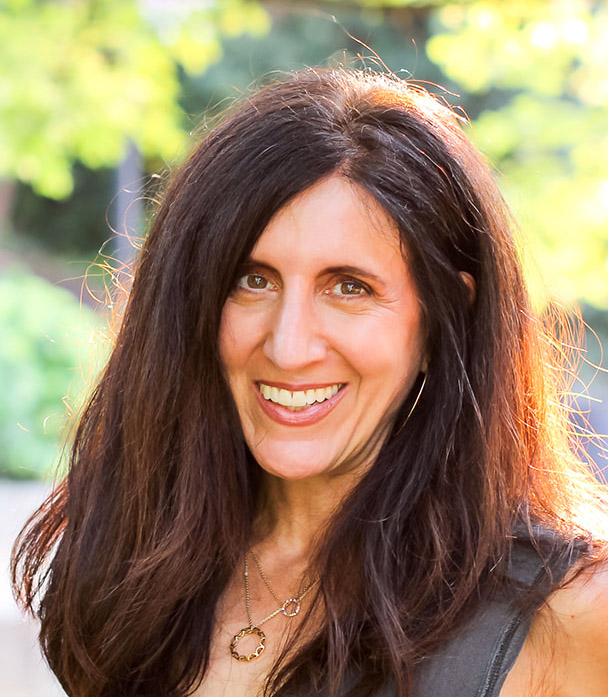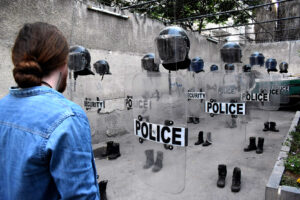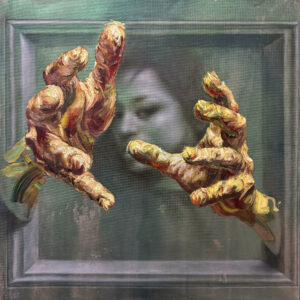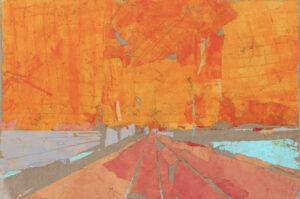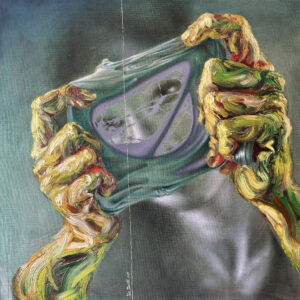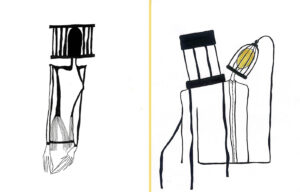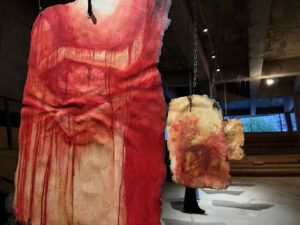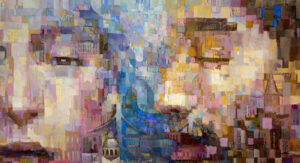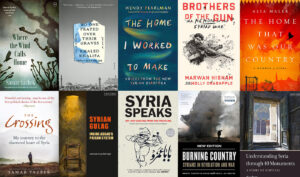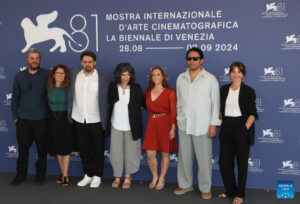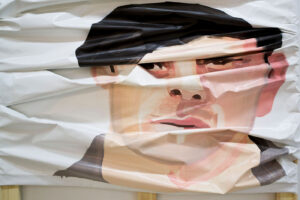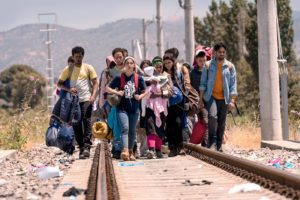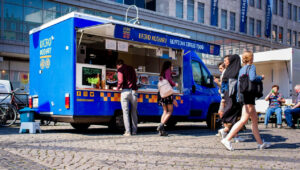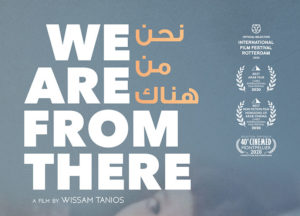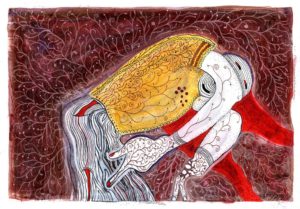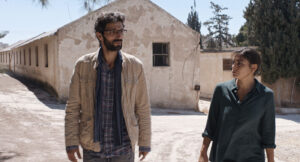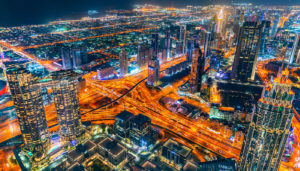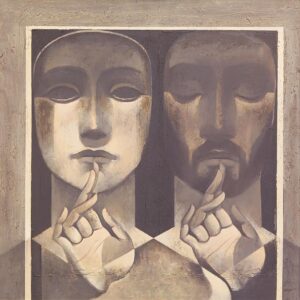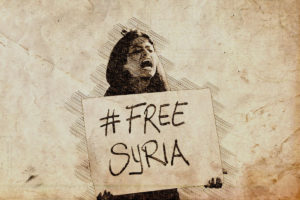“Free Syria” by Wafa Ali Mustafa.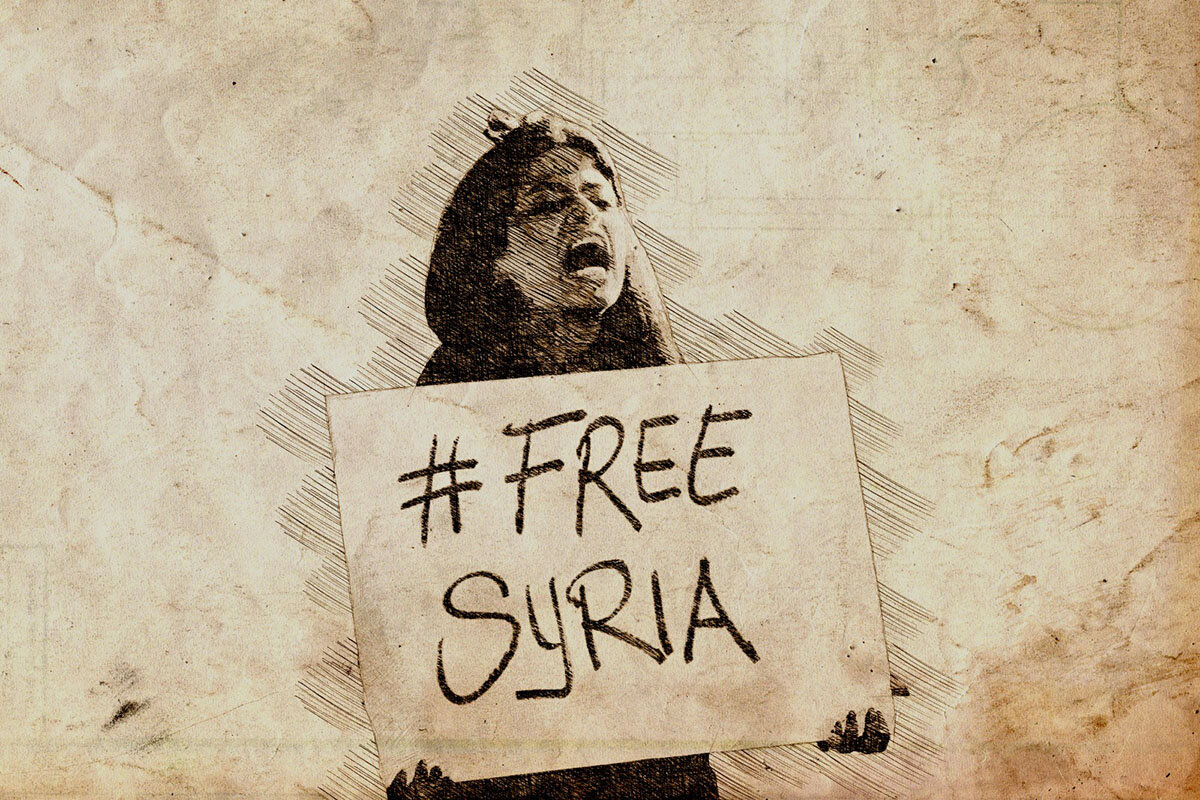 <
<
Mischa Geracoulis
When Mahmoud Ismail and his family left Damascus circa 2012, they didn’t know when or where exactly the journey might end. First to Lebanon, then through Turkey, they arrived in Greece some four years later.
Then 12, Mahmoud holds up his best-selling image.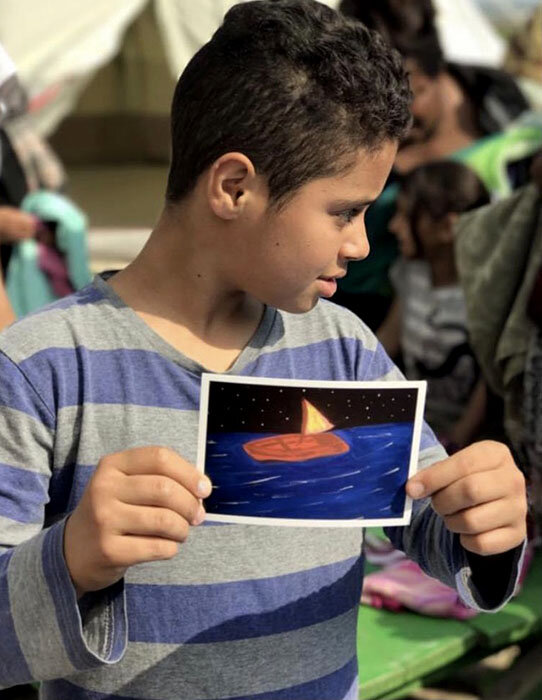 <
<
Around this same time, a flight attendant based in Frankfurt named Kayra Martinez was becoming aware of the Mediterranean refugee crisis. Originally from Colorado, she had travelled and lived in various countries outside of the U.S. for years. After watching German TV from her Frankfurt flat, observing the often-horrendous conditions in which refugees and asylum seekers found themselves, she made a point to get educated on the crisis. Once realizing that there were literally hundreds of thousands of people in her own backyard, Kayra decided to see for herself.
A trip to the nearby train station brought her face to face with throngs of desperate people. Though primarily from Afghanistan and Syria, looking into the eyes of the older women amongst the crowd, Kayra later said that she felt that any one of them could have been her mother. Any one of those young men could have been her brother. Watching them crowd into makeshift camps around the station and along the roadside, compelled her to offer what she could.
When Kayra wasn’t flying for work, she began collecting food and clothing donations from her Frankfurt community, and opened her flat to refugee mothers, giving them an opportunity to bathe their babies. Still, she felt a heartrending pull to do more.
“The truth about Syria? It is an uprising, it is a revolution–it is not a civil war. The people in Deraa and Damascus started this not because they were pushed or manipulated or mobilized by foreign powers or paid by the enemies of the state. We were under severe suppression and oppression for years and our revolution was brewing. When it happened in Tunisia and Egypt, it triggered the situation in Syria and speeded up the processes…Today, Syria is a mix of Somalia, Zimbabwe and Rwanda. This is going to last like this for years and I see no light at the end of the tunnel.”
Kayra began to volunteer in the Nea Kavala refugee camp in northern Greece, where she witnessed a seemingly endless sea of traumatized children. On a whim, she brought paper and crayons into the camp, improvised an “art studio,” and ushered children in. She noted how the children were almost immediately calmed, transfixed by the fleeting chance to return to the innocence of childhood. She was astounded by their creations—resplendent outpourings of emotion, harrowing scenes, and unfamiliar vistas.
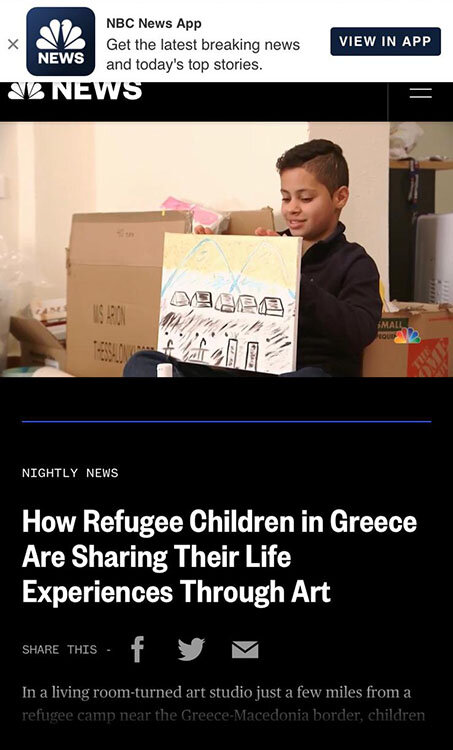 <
<
Since that first day of coloring in the camp, thousands more children clamored to do the same. Kayra quickly devised a way to bring artists’ materials—canvases, brushes, acrylics purchased locally in Greek shops—to the refugees, facilitating artmaking workshops, or simply providing the space and implements.
Enter Mahmoud Ismail. He and his family had been transported to the Nea Kavala refugee camp in northern Greece where they met Kayra.
One of Mahmoud’s first works of art, painted in 2016 in Nea Kavala, features a lone red raft on an indigo sea set against a Van Gogh-esque starry night sky. Reproduced as a post card, Mahmoud’s depiction of the dark Aegean crossing was sold to raise funds for families in the camp.
During a March 2021 WhatsApp video call with Mahmoud, now living in Germany, he said he really doesn’t know why the war started in Syria 10 years ago; he only knows that he and his family needed to get to Greece. “We came in a small boat in the middle of the night. I drew this picture to show that we were alone in the sea.” The proceeds from his painting of that event, the small raft’s dark-of-night arrival on Greek shores, was ultimately responsible for housing 28 refugee families in Athens.
Fast-forward to the nonprofit that Kayra Martinez formalized in 2017, Love Without Borders for Refugees in Need. The result of those workshops and freeform painting sessions has, thus far, been 110 worldwide art exhibitions in which she sells the refugees’ works of art and returns 100% of the sales to the artists. The funds have provided support to refugees living in camps and elsewhere in Greece, have secured apartments in Athens for some of the families exiting the Nea Kavala camp, and helped to resettle families in several countries in northern Europe.
When Kayra met Mahmoud in the camp in 2016, his natural gift as an artist quickly came to light. A 12-year-old, he was also articulate in English, possessing an effervescent personality and affable “can do” spirit. For the next year and a half, Mahmoud—with his mother’s permission—became Kayra’s right hand, translating Arabic to English, and often aiding in important decision-making when governmental and nongovernmental organizations floundered.
Even at such a tender age, Mahmoud stood out as a leader, and during that first year, was instrumental in identifying 38 of the most vulnerable families in the camp, assisting Kayra with endless paperwork necessary for family transfers out of the camp. During this period, Greece suffered immeasurable wildfire damage, creating a crisis for animals as well as people. In response, Love Without Borders extended its care to that of homeless animals for which Mahmoud eagerly took part in organizing. Says Mahmoud, thinking back on those days with Kayra, “I tried to help her as much as I could, for as many as possible.”
Mahmoud Ismail at 17 in Germany.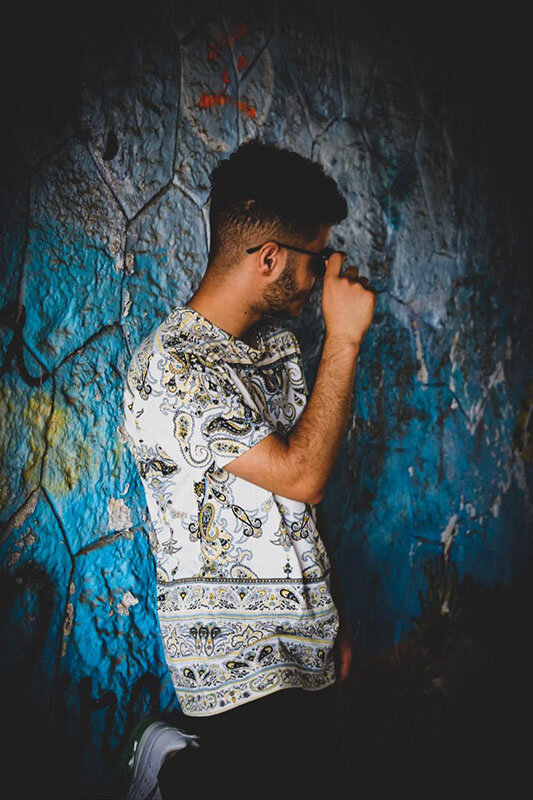 <
<
While Mahmoud did for others alongside Kayra in the camp, he continued to draw and paint with the other children. He mused, “Art is [an outlet] to draw and paint my feelings and to [imagine] without thoughts of problems. I think if somebody has a lot of problems in life, he could bring that to the canvas and [give it] color. Kayra taught me to keep things simple.”
For Mahmoud, making art was a way to simplify, to process trauma, envision another life, and make a bit of money. As resilient as he’s proven to be, and wiser before his time, the hours spent coloring and painting were rare moments to reclaim being a child.
Adept at languages, Mahmoud now adds German to his rerpetoire. He reports that “it was good to come to Germany. I am starting a good life here with education and everything else. I don’t draw now, but I play football and do sports.” He attends a German vocational school, virtually until pandemic’s remission, and says that his plans afterwards include “joining a business for selling cars.”
When asked if he thinks of Syria, or if he’s in contact with anyone there, he responds, “Yes, I have contact with Syria, and I think about the people there, but there’s no going back.”
Ten years on, Mahmoud still doesn’t know why there’s war in his homeland, adding, “I was small in Syria; and now I am 17 years old, and live in Germany.”




